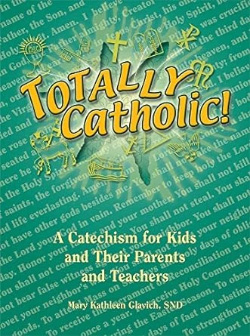
In the comic strip “Wizard of Id” the king once asked a monk, “Any chance of ever being canonized, Padre?” The monk replied, “The closest I could hope for is to be shot out of a catapult.” The canonization of two contemporary popes has raised questions about sainthood. Why and how does the Church declare certain people in heaven? The practice began with the martyrs. Dying for the faith was a sure sign of sanctity. The early Christians honored the tombs of the martyrs in the catacombs. They celebrated the day of death (birth into heaven) as a feastday. After the persecutions stopped, Christians seeking to be holy took to the deserts to practice prayer and penance, sometimes called “white martyrdom.” In addition confessors proclaimed the faith and possibly suffered for it. The faithful bestowed the title of saints on some of these people. The first documented papal canonization didn’t occur until 973. In 1234, it became papacy’s task alone.
Lawrence Cunningham offers a good definition of saints: persons so grasped by religious vision and so exemplary of that vision that they teach others how to see value in that vision. Thomas Merton considers saints sacraments because they are signs that mediate grace. They are also signs of contraction, at times troublemakers. Look at St. Francis. He was not just a hippy-type saint who talked to birds. He still shakes us up with his messages of peace in the face of violence and poverty in the face of affluence.
Today the process for determining a saint is supposedly fail-safe. First the local bishop gathers evidence and sends it to the Congregation for Causes of Saints. The proposed person is called a Servant of God. If this evidence is accepted, someone writes an account of the candidate’s life. If a board of experts agrees that the person practiced heroic virtue and if the pope agrees, the Servant of God is retitled Venerable. If a miracle occurs through the intercession of the Venerable one, he or she may be beatified and called Blessed. After a second miracle, the Blessed one may be canonized, named a Saint. (No miracles are required of martyrs.) Being canonized means the Saint is approved for invocation, veneration, and imitation. There is a grand celebration at St. Peter’s Basilica in Rome (or the new Saint’s country), and a feastday is assigned. The Saint may be appointed a patron of a certain group or condition. For example, Pope Saint John Paul II has been named patron of World Youth Days.
People might wonder why Catholics pray to saints instead of going directly to God. We think nothing of asking friends on earth to pray for us when we or someone we love is in trouble or sick. We can turn to the the saints, our friends in heaven, to intercede for us too.
More on the saints next week.
Who is your favorite saint? Why?









3 Responses
My favorite Saint is St. Anthony He has always helped me from the time as a child when mom taught me Anthony Anthony hop around somethings lost and can’t be found. To this day I never leave home without this invocation to him. Once a friend heard this poem and said it to find her lost item. And she said what was that poem it worked she was amazed. So I printed it out for her and she was going to teach her grandchildren this poem. I felt good about that. Mom may have left me a legacy with this poem little did she know I would be passing it on. Although I had heard many versions of this which blew me away as I thought it was just special made up by mom. But that is OK as I can keep it special between mom and me may she rest in peace.
nice one..would be great on ACWB!!
Today is my saintly mother’s birthday. She would have been 95, but passed away at the early age of 57. Because of her, our family saint is St. Therese the Little Flower. (A tradition began when she took the name of Sr. Carmeline when she was a novice and postulant. Thank goodness she left the order due to sickness or there would be no “me.” It was carried on with my daughter’s taking of the name Therese for Confirmation) So my two favorite saints are St. Therese and the unrecognized, unofficial “saint” of my dear mother who still guides and comforts me.